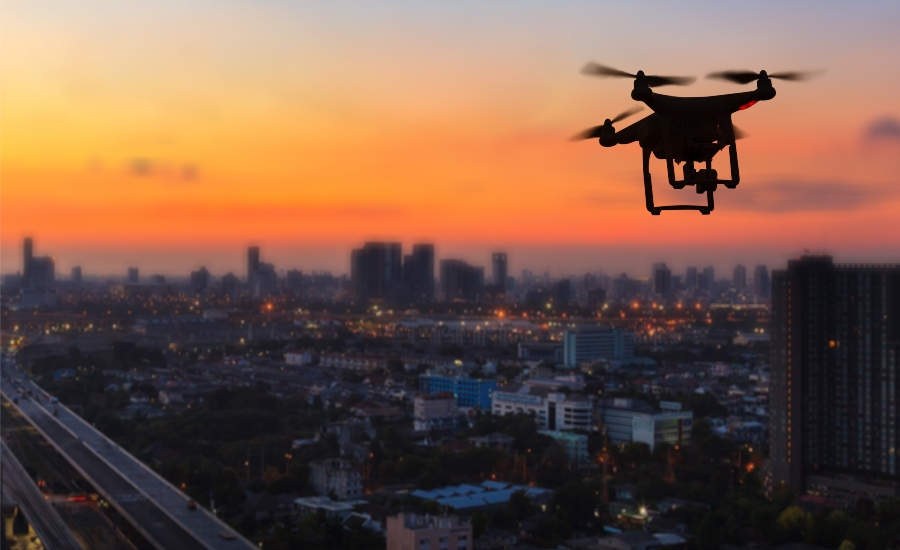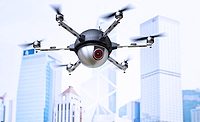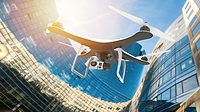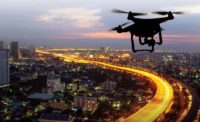Enter the drone. Today, off-the-shelf commercial drone technology poses a significant threat to governments, corporations and the public. While the positive use cases for deploying commercial drones are many, like all technologies, drones have a dark side that security professionals must prepare for. If history is any judge, the trend toward using drones for clandestine surveillance, espionage, and armed attacks has already been proven. Human nature being what it is, as commercial and recreational drone sales accelerate, it is only sensible to expect history to repeat itself. When the inevitable happens, government agencies and commercial businesses will turn to the physical security integrators for solutions, not the IT staff and their integrator partners. Will you be ready for an opportunity that is squarely in the sweet spot of physical security professionals to address?
Federal Bureau of Investigation Director Chris Wray testified before a Senate committee that drones are an increasing threat in the United States. "Two years ago, this was not a problem," he told the committee. "A year ago, it was an emerging problem. Now it's a real problem. So we are quickly trying to up our game."
There are numerous nefarious use case scenarios where airspace security is a crucial requirement ranging from countering drones that intercept a company's Wi-Fi communications to protecting critical infrastructures. Many of these customers already deploy a range of physical security solutions:
Sports Venues and Public Gatherings
We can all imagine the horrific scenarios of an attack on a crowd and event during a "live" national broadcast and the immediate social media frenzy to follow. However, there are other less apparent scenarios to consider.
Division 1 College Football programs earn tens of millions of dollars annually. The difference a single game loss can have on a major bowl invitation is a reality. Emotions run high in State and conference rivalries. While we understand the importance of game day security to prevent an unwanted drone landing on the field or in the "tailgating" parking lot, what about the security of the airspace over the practice field the week leading up to the game? A drone landing on an adjacent rooftop and returning under cover of darkness would be a simple operation. That video footage would be the difference in the game's outcome. Selling the footage to a BIG Money alumni group or alerting an assistant coach is all it would take to change the course of the season. Motivations will vary, but the ability to execute espionage is now at hand.
Prisons and Correctional Facilities
These are perfect targets for drone deliveries of contraband and weapons. COVID-19 shut down visitations to these facilities and may have accelerated this practice. What happens when the threat flies directly overhead of the guard force, surveillance cameras, access control systems, and the physical barriers the integrator has deployed? Answer: nothing good. The other issue in this scenario is prison staff security. Weapons being dropped into a prison yard are obvious, but what about the daily routine's disruption to which inmates are accustomed? Being evacuated (repeatedly) from their outdoor activities might tend to upset the inmates. Prison union officials may take notice and demand counter-drone "airspace security" systems during negotiations.
Airports and Critical Infrastructure
Major airports are obvious targets for both the clueless recreational drone user and the serious criminal or terrorist. As for the amateur, you cannot fix stupid: "I did not know you cannot fly a drone by an active runway?". For the professional, airplanes have been high-value targets for more than 50 years. In 2018 Gatwick Airport in London was shut down during the Christmas holiday for two full days costing over $65M in lost revenues. The perpetrators were never caught.
As for critical infrastructure, one only has to look at recent news stories of winter blackouts in Texas and the Colonial Pipeline hack to realize how fragile the nation's power grids and energy delivery systems truly are. A coordinated attack by a dedicated group using drone technology (individual, several, or a swarm) would be a disaster. The group orchestrating an attack would get global visibly. A secondary advantage being an improved chance of success via a remote attack without the traditional suicide mission.
This threat is real, and the time to address it is now. Security leaders within their organizations should start looking for solutions to combat the looming threats within their airspace.
This article originally ran in Security, a twice-monthly security-focused eNewsletter for security end users, brought to you by Security Magazine. Subscribe here.




